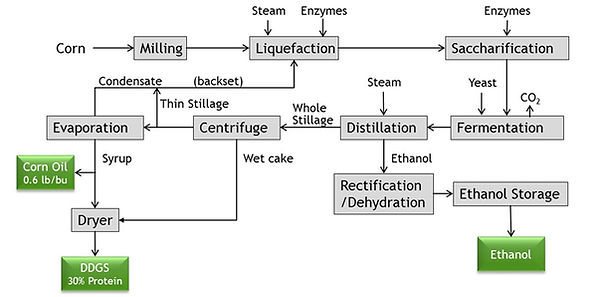Technology
An important advantage of the D3MAX process is that the wet cake has been “cooked” or pre-pretreated in the ethanol plant. This means that the D3MAX pretreatment can be run at much lower temperature and pressure, and milder pH conditions. The net result is that the cost of the pretreatment equipment is significantly reduced and operating costs are also reduced.
In a presentation at the 2015 Fuel Ethanol Workshop in Minneapolis, Novozymes, a leading cellulase enzyme producer, described corn fiber as a “captive feedstock for cellulosic ethanol with a production potential of 1.3 billion gallons of cellulosic ethanol per year.” Novozymes confirmed BBI’s experience that “corn fiber requires mild pretreatment and has less inhibitors” and further stated “Corn fiber is easily digestible with low enzyme dose.” Novozymes presented experimental results showing that equal conversion of corn fiber is achieved with one-third the enzyme dose compared to corn stover.
The D3MAX process converts the cellulose and hemicellulose in wet cake to monomeric sugars which are then fermented to ethanol. Residual starch in the wet cake is converted to sugar and fermented to ethanol. After fermentation, the “beer” is distilled and dehydrated in the same manner as ethanol produced from corn starch. Water containing protein, lignin, and other non-fermentables is removed from the bottom of the beer column and processed in the same manner as whole stillage in a dry mill ethanol plant to produce a low fiber, high protein DDGS.
Converting the fiber and residual starch in the wet cake to ethanol reduces the volume of DDGS by about 20%. The protein concentration is increased to about 40%. This low fiber, high protein DDGS is suitable for feed for monogastric animals including swine and poultry, in addition to use as a feed for cattle and dairy cows.
The D3MAX process is a “bolt-on” technology suitable for implementation at approximately 190 dry mill ethanol plants in the US.
D3MAX Process
The primary process steps in a corn dry mill are shown in the figure below.

The figure below shows how the D3MAX process (shown in blue) “bolts-on” to the dry mill ethanol plant.

